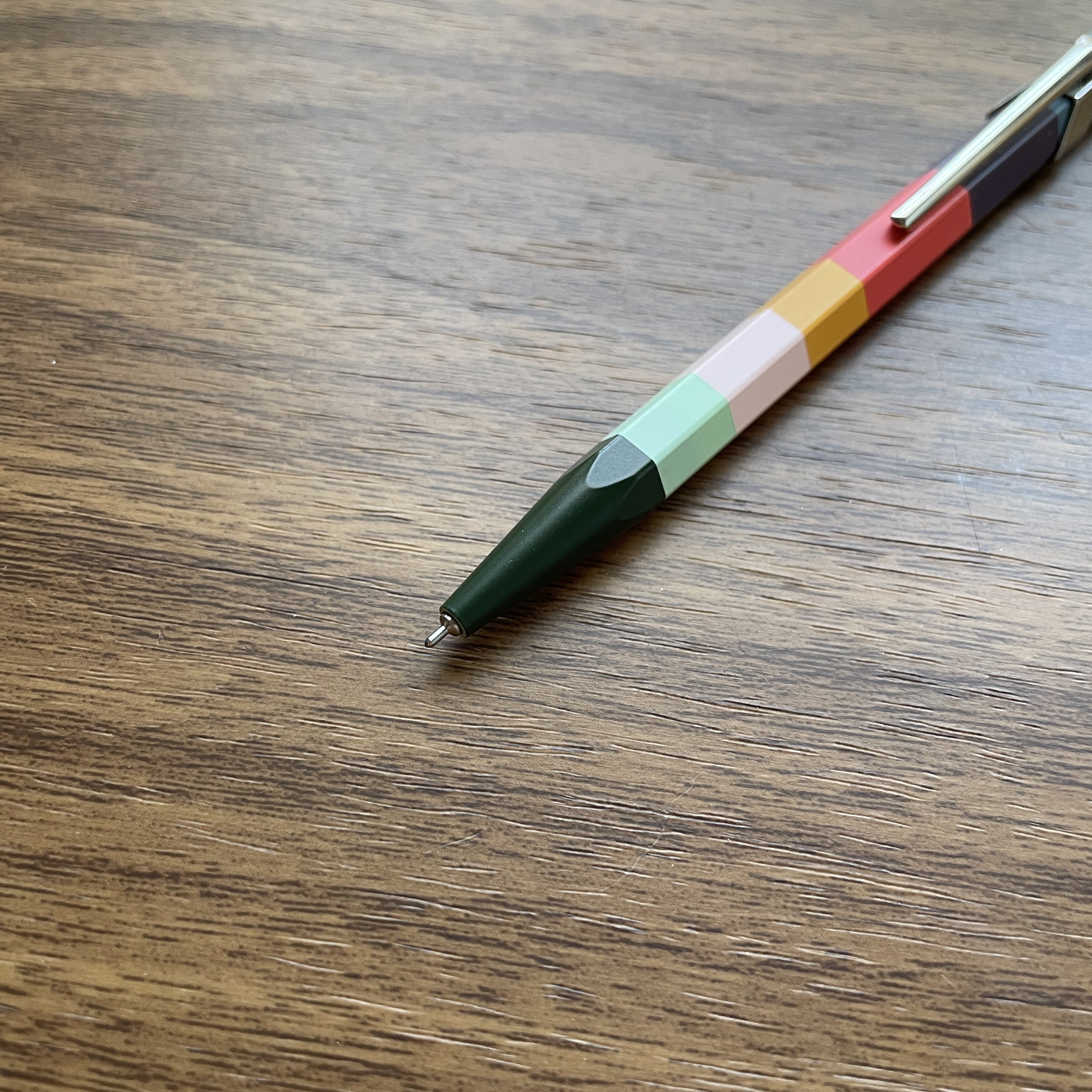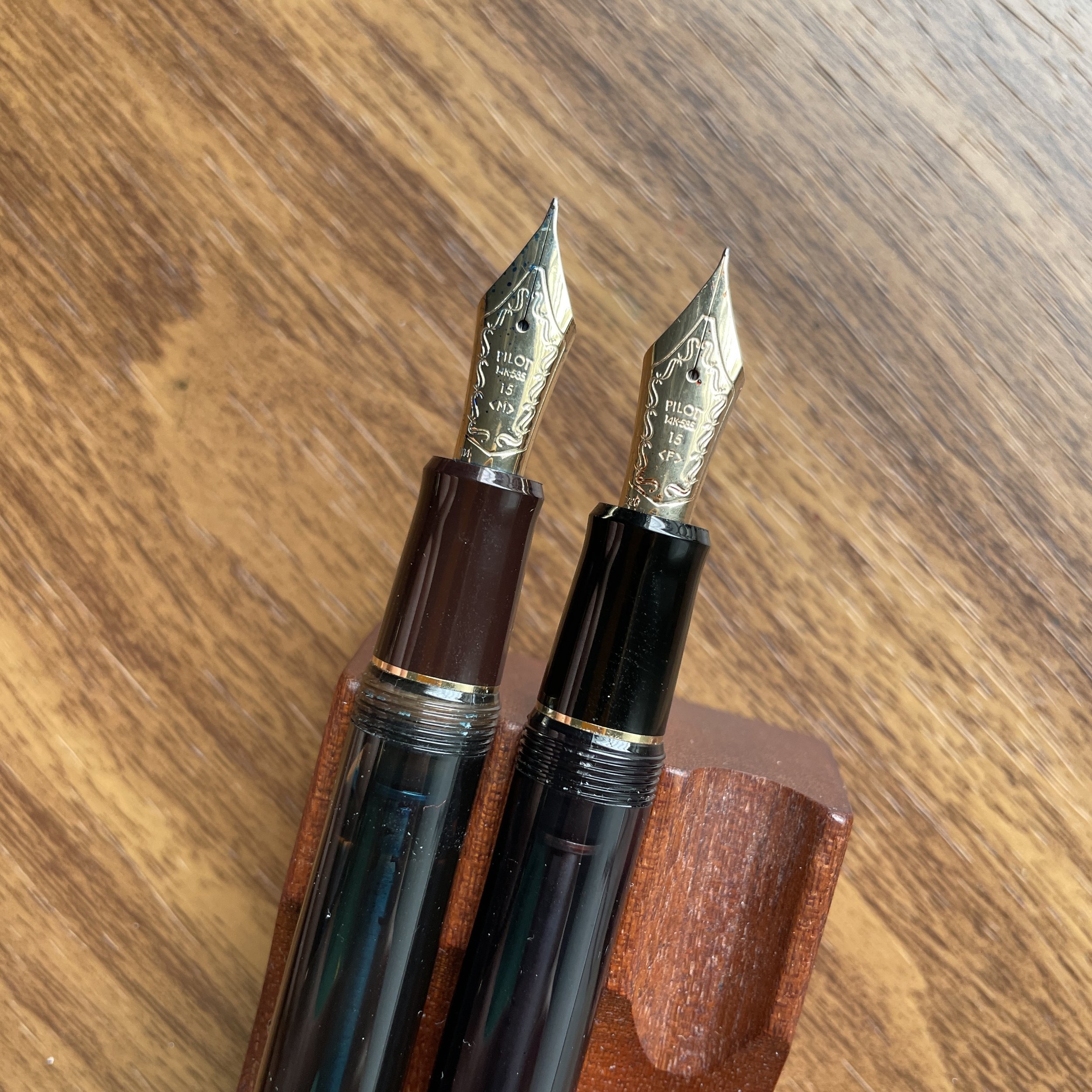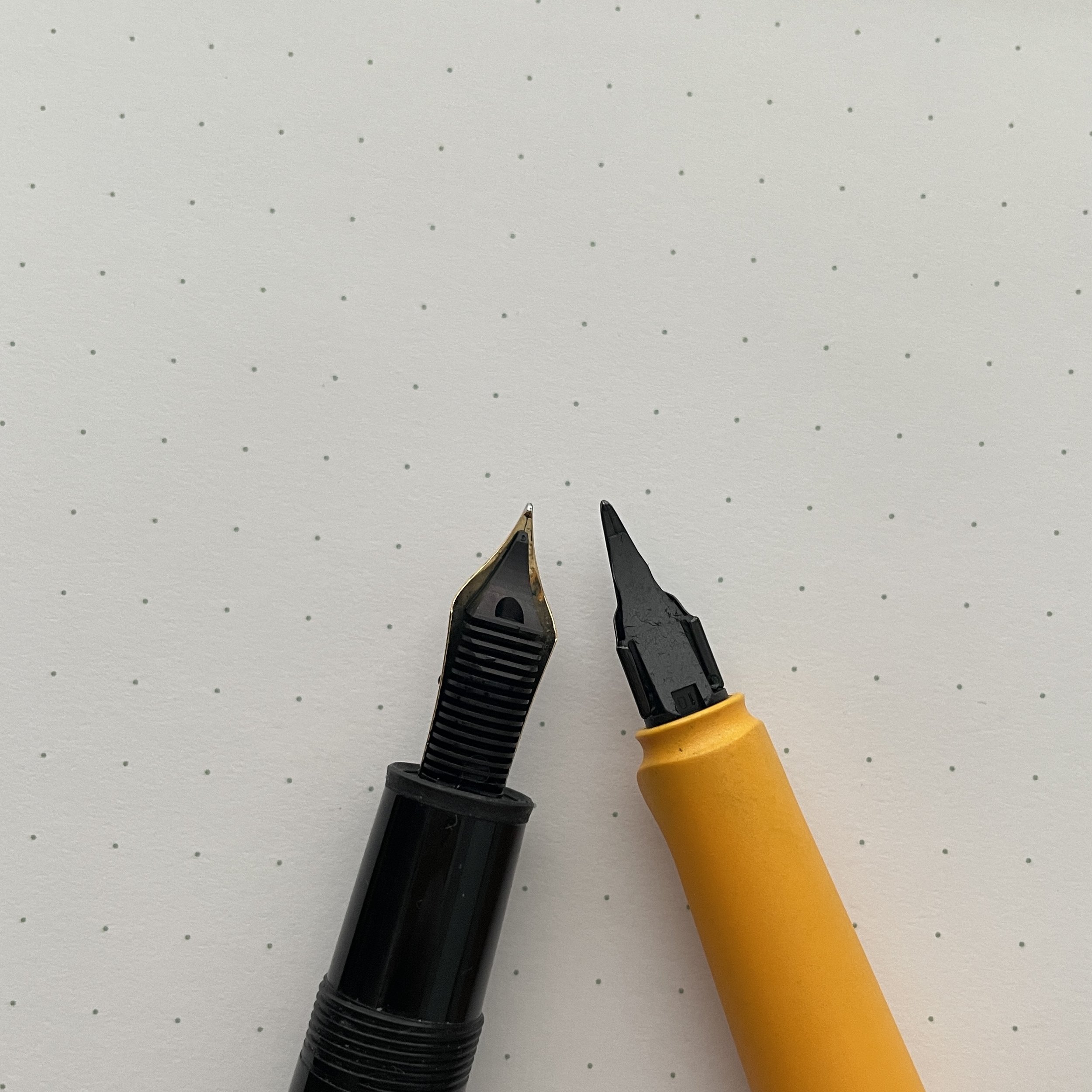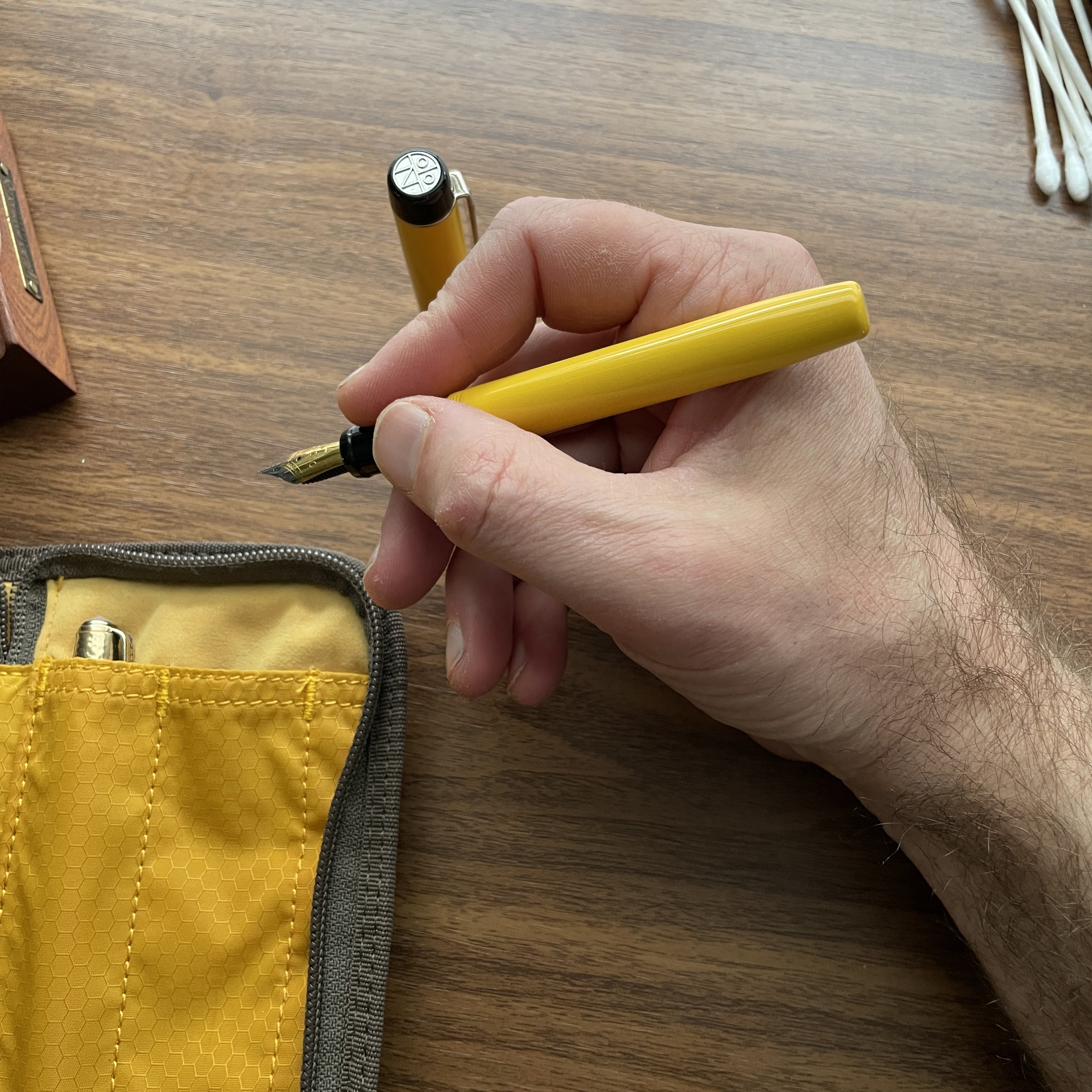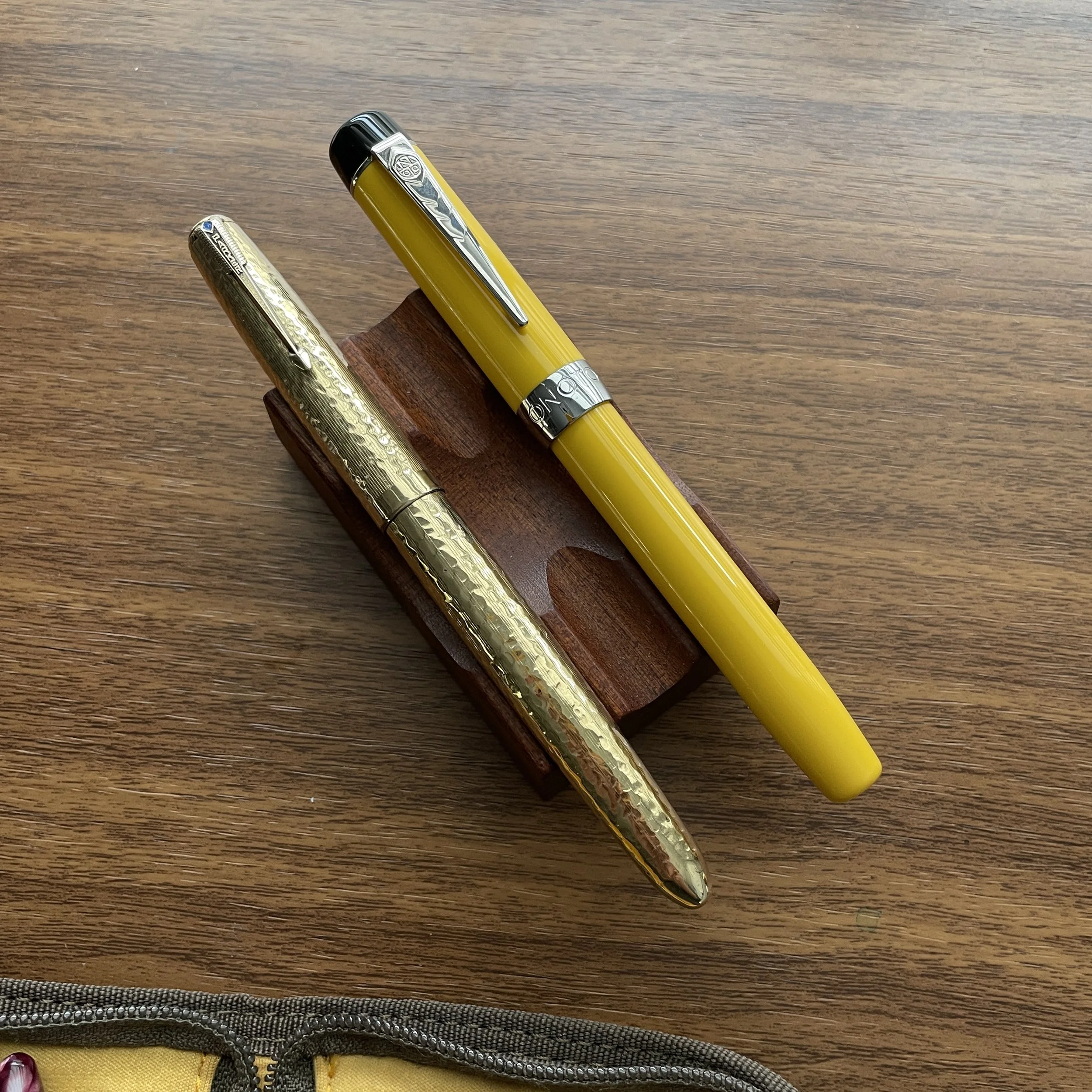Though I remember when they launched their first kickstarter back in 2015 or so with their “Mover” and “Shaker” pens, Texas-based Tactile Turn has expanded over the years to become one of the more popular makers of machined retractable pens and pencils, renowned for their unique texture and wild finishes. For the past two-plus years, Will Hodges and his team have released their “Side Click” model in a series of limited quarterly finishes based around a specific theme, ranging from the latest, “8-Bit” (video games), to the pen I’m about to review here, the Winter 2023 release “Deep Space.” I’ve used most of the various Tactile Turn pens over the years, and for reasons I’ll explore more fully here, the Side Click is my favorite model.
Design and Build - Quality You Can Feel (and Hear)
Of all the models in their currently lineup, the Side Click is the one that reminds me the most of the “Mover” pen I originally reviewed. While I enjoyed the Mover for a time, I ultimately found the combination of the metal construction and length required to accept a full-sized Pilot G2/Juice refill too top-heavy for my taste. Specifically, the pen was too long and somewhat unbalanced in my hand. Since then, however, Tactile Turn has made all of their pens available in three different sizes: Standard (5.8”), Short (5.3”), and Mini (4.6”). The Standard still accepts the G2 gel refill, the Short is designed to take Parker-style cartridges, and the Mini takes only the G2 mini refill, making it the least versatile of the three. Personally, the mid-sized “Short” pen fits my hand the best, and it’s likely what I will use going forward. Because this pen takes Parker-style refills, you have a wide range of refill options available, ranging from Schmidt Easyflow 9000 and P900 ballpoints to Caran D’Ache Rollerball refills to Ohto Needle-tip gel cartridges, all of which I’ve used.
The milled clip, designed for a deeper carry, is one of my favorite design elements of the Side Click. So far, I like it much better (both aesthetically and functionally) than the folded metal clip that Tactile Turn used on the Mover and the Bolt Action pen I’m currently using.
Tactile Turn uses an in-house mechanism that they describe as “extremely satisfying in both feel and sound.” I agree. To deploy the refill on the Side Click, you depress the knock, which locks the tip in place. To retract the pen, you press a small button on the upper part of the barrel. The release mechanism is well-designed in that it requires the right amount of pressure to work- it would be difficult to accidentally hit the button and retract the pen while you’re writing. For a demonstration of how the mechanism works (and sounds!) check out this YouTube video.
You press the button on the side to retract the refill. The Cerakote finish is applied over a titanium base, allowing the pen to remain relatively lightweight given the machined metal barrel.
Per their website, all Tactile Turn pens are designed, machined, assembled and shipped in-house from their shop in the Dallas, Texas area. Each pen comes with a lifetime warranty, so if you run into any problems, they’ll try to make it right.
The front of the barrel unscrews, allowing you to drop in a refill. Tactile Turn uses an o-ring to ensure a snug fit, and you cannot see the seam.
The Cerakote Finish Is the Star of the Show
I’m not sure exactly how Tactile Turn achieved the desired effect on the finish of the Deep Space Side Click, but it’s gorgeous. Apparently, they started with a dark purple-blue Cerakote coating, then added layers of different colors to create the appearance of galaxies and nebulas. I can’t really overstate how impressed I am with this pen, as the finish is stunning. Cerakote is also durable, and I’ve personally experienced no chipping or scratching on either the body or the clip despite carrying it in my pocket at times and not being especially careful with the finish.
The “Short” size tends to fit my hand perfectly.
Takeaways and Where to Buy
In a move I now deeply regret, I passed on acquiring earlier Tactile Turn seasonal releases, but after carrying the Deep Space as my primary retractable pen option for the past few months, I plan to set aside some money in the pen budget each quarter to add to the collection. I’ve thoroughly enjoyed the Side Click, and I currently have one of the Bolt Action pens in the queue pending review.
The “Short” version of the side click is roughly the same size as a Pilot G-2 gel pen.
As I mentioned, the “Deep Space” Side Click pictured here is one of the quarterly releases, and is no longer available, but if you enjoy the periodic themes, check out the current model, “8-Bit.” The pen is priced at $149 (standard for all lengths), and you can even get a matching mechanical pencil (same price). For those of you who would like to add a pocket or utility knife to their everyday carry kit, visit Tactile Knife Co., where they sometimes releases a small batch of Rockwall models in matching seasonal editions. (8-bit isn’t available, at least not yet!)
The pen featured in this review was purchased at full price with my own funds for my own use. The Gentleman Stationer is supported entirely by purchases through the T.G.S. Curated Shop, and pledges via the T.G.S. Patreon Program. This post does not include third-party affiliate links or paid advertising.
